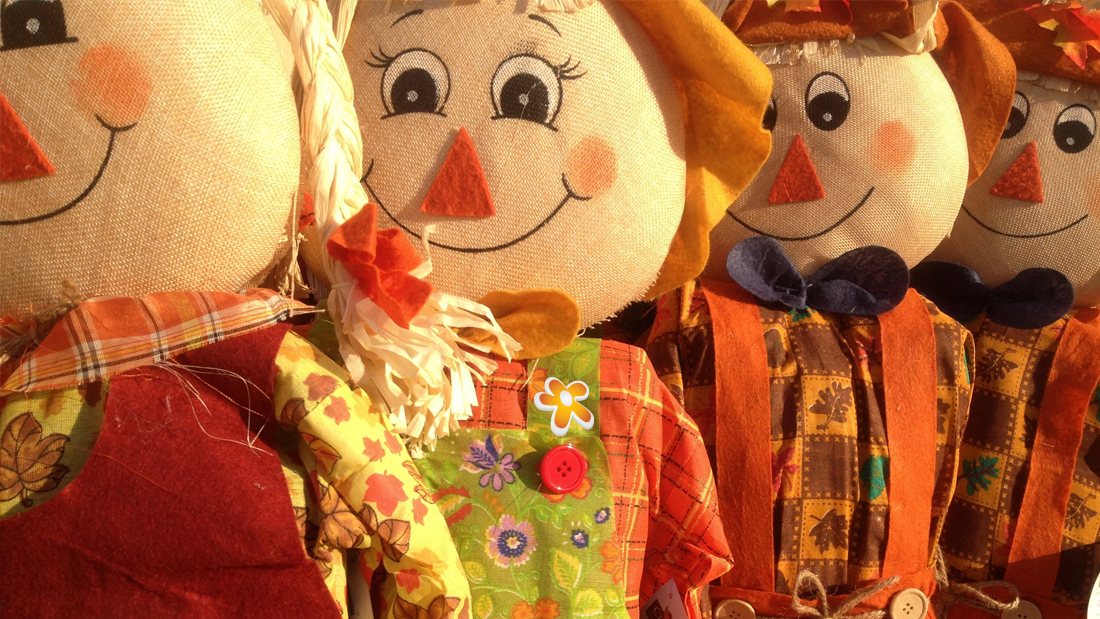Have a Sensory-Friendly Autumn
This time of year can be a little bit spooky and a lot of fun, but for kids with sensory difficulties, it can be downright scary. First it’s warm out, then it’s cold. The soft grass is suddenly covered with weird crunchy leaves. And Halloween can be especially challenging: Faces don’t look like they should, there are creepy noises everywhere, and why the heck do we keep knocking on doors when we can’t go inside, and taking candy that we can’t eat until much later? To say that the fall season can be a little overwhelming is, well, a monster understatement.
Autumn doesn’t have to be a frightful time of year, though. These helpful tips might just help everything fall into place. (Please excuse our corny puns. We’re excited about this colorful season!)
Fall Festivals
- Arrive early, or come later in the day, to avoid the big mid-day crowd.
- If the festival is held at the church or school your child attends, make arrangements to meet a friend there. Having a buddy by your side often helps combat anxiety.
- If your child has trouble with impulse control, try to get an idea of the festival layout before you go. Stay away from areas that might be too tempting for your child. This can help avoid the fingers-in-all-the-cakewalk-cake-icing problem and the potential meltdown afterward.
- If you and your child are going on a hayride, have him sit between you and another adult or larger child. If he is comfortable with it, sit very close on each side. This can help him feel secure as the tractor makes its way along the path, especially if your child has vestibular challenges.
Changing Seasons
- Kids accustomed to playing on the soft green grass might be in for a shock when the ground is suddenly covered in crunchy leaves. The edges may feel sharp to your child, and he might dislike the sound of them under his feet. Rake the leaves into a pile, clearing the grass for a small play area. Embrace the opportunity to teach your child about why the leaves change, and get him used to the feel of the leaves by doing a leaf rubbing or collecting and studying different varieties.
- Layers are a child’s best friend this time of year. It can be freezing in the morning, and roasting by afternoon. Dress your child in two or three layers, especially if she dislikes the experience of getting fully dressed and undressed when it’s time to change clothes.
- Remember that allergies aren’t just a spring thing. If your child seems to be fussy or uncomfortable, consider that something in the air might be causing his discomfort.
Halloween
- Let your child try on her costume and wear it around the house a couple times before you go out trick-or-treating, to avoid unexpected problems with itchiness or ill fit.
- Take your child’s needs into account when you’re planning your trick-or-treat trip. Some kids love the thrill of being out after dark. For some children, going around in a safe neighborhood makes it easier to deal with all the people; the crowds seem smaller when you’re not inside. Other kids might do better in a more condensed, well-lit environment, such as a mall trick-or-treat event.
- If the usual Halloween events are just too much for your child, why not plan a fun night at home? Dress up in your favorite costume, serve fun Halloween treats such as popcorn balls and caramel apples (if your child is old enough to enjoy them) and watch a Halloween movie.
Whatever you do to celebrate this time of year, remember that the most important thing to do is to have fun. Adapt your family’s activities if you need to, and enjoy these cool nights, perfect for snuggling, warm apple cider, and maybe telling a spooky story or two—with the lights on, of course!
Have a Sensory-Friendly Autumn
April Fox, Staff Writer
Want to know how a Therapist can Help?
Call (828) 398 0043 or click on the schedule button.



